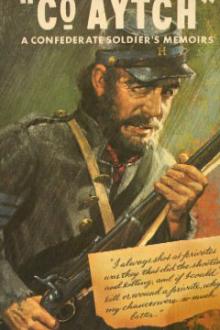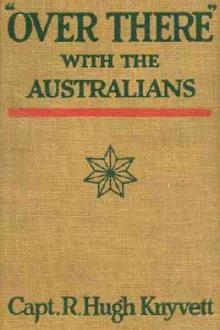Lohgarh - Khalsa Rajdhani, Lohgarh fort - Lohgarh Trust by S. Daljeet Singh Bajwa (books that read to you .TXT) 📕

- Author: S. Daljeet Singh Bajwa
Book online «Lohgarh - Khalsa Rajdhani, Lohgarh fort - Lohgarh Trust by S. Daljeet Singh Bajwa (books that read to you .TXT) 📕». Author S. Daljeet Singh Bajwa
Hindus & Muslims Embrace Sikhism
After the victory of Sarhind hundreds and thousands of Hindus joined
the Sikh faith (but, after the martyrdom of Banda Singh, most of them again returned to the Hindu fold).28 Likewise, some Muslims too embraced Sikhism in order to taste the fruit of power. Among these was also Mir Nasir-ud-Din (named as Nasir Singh) and Dindar Khan, son of Jalal Khan Ruhia, (named as Dindar Singh). After the fall of Banda Singh’s rule, this Dindar Singh again joined Islam. In 1713, he joined hands with the Sayyad brothers and played an effective role to install Farukhsiyar as the Emperor at Delhi, an again in 1719, it was he who dragged Farukhsiyar from his palace, blinded him and later killed him.
Sikh Expeditions in Deoband, Saharanpur and Jalalabad
The Sikh victories inspired some people beyond the Yamuna River too, and they joined Sikh faith. When Jalal-ud-Din, the Muslim chief of this area, came to know that some Muslim residents of Unarasa (Deoband pargana) had embraced Sikhism, he arrested and tortured them in prison. One, Bhai Kapur Singh had been preaching Sikh mission in this area; when he got the news of the plight of these Sikhs, he sent a message to Banda Singh.
After making preparations, Banda Singh attacked Deoband and captured it. He wanted to attack Jalalabad too, but before marching to the stronghold of Jalal-ud-Din, he thought of taking over Saharanpur. In those days, Saharanpur too was a major state like Sarhind and Hissar- Firoza; it consisted of 28 Parganas; Sayyad Ali Mohammed Khan Kanauji was the Chief of Saharanpur. Banda Singh sent a message to him asking him to surrender and pay tribute. But, the coward Kanauji, instead of fighting or negotiating, chose to flee from the city along with his family and wealth. He appointed his son Dindar Ali Khan as his successor and he fled to Delhi.
When he was gone, some Muslim clergy tried to raise the bogey of jehad (holy war). They were joined by some umraa (aristocracy) and ministers. They closed the doors of the walled city and stationed security men on the towers of the wall. When the Sikh soldiers reached there, these guards welcomed them with a volley of arrows and gunshots. But, this could not last long and did not frighten or dishearten the Sikhs.
The Sikhs broke open a gate of the city and entered it, thus they captured the city.
The Sikh army was joined by several Hindus, mainly Gujjars, as well as some miscreants too. They had joined the Sikhs simply with an intention to plunder; but when Banda Singh came to know about their activities, he rebuked them and expelled them from his army. After leaving him, these wicked Gujjar Hindus entered some villages around the city and plundered people.
Saharanpur was mainly a Muslim city, and, the local Hindu residents had generally been the victims of atrocities of the rulers; they felt relieved when the Sikhs occupied the city. When the Sikhs became the masters of the city, several elite and rich Muslims, now, began moving out of Saharanpur. Banda Singh stayed here for several days. He changed the name of the city from Saharanpur to Bhaagan Wala Nagar (Bhaag Nagar).
Punishing the Pirzaadas of Behat
When Banda Singh was still in Saharanpur, some Hindus from Behat (about 25 km from Saharanpur, towards the hills), came to see him and narrated the story of their sufferings. They told him that the Pirzaadas (literally: the sons of the Pirs, i.e. the descendants of the Muslim priestly class) were very cruel to the Hindus; they would leave no chance to molest the honour of their women folk. Banda Singh sent a large unit of Sikh soldiers to teach a lesson to the Pirzaadas.
The Sikh army had not to suffer much loss before occupying the city. When they were in full control of the town, they summoned all the Pirzaadas in an open space and asked the people to narrate their crimes. They found that all the Pirzaadas were guilty of cruelty, rape and other crimes. All of them were executed there and then. It had happened in the month of June 1710.
Unsuccessful Attack on Jalalgarhi
A few days after the occupation of Behat, the Sikh army decided to attack Jalalgarhi (the Fortress of Jalal-ud-Din Khan). Here, Jalal-ud-Din
(also known as Jalal Khan) had stationed his army, and there was also stored most of his arsenal and treasury; the Sikhs wanted to capture it. On the other hand, Jalal-ud-Din Khan too knew of the Sikhs’ intentions, and, he himself was fully prepared for the battle. Besides, he had raised bogey of jehad (holy war) and recruited several more young Muslim boys into his army. He had also stocked a lot of food in the Fortress, which could last for months. The Sikhs put siege to this Fortress, which continued for more than 20 days, but they (Sikhs) could not achieve their goal because it was the rainy season; hence, they had
to temporarily abandon the idea of capturing this Fort.
Attack on Ambaheta
After an unsuccessful expedition to Jalalabad, the Sikhs returned to Saharanpur. On their way they attacked Ambaheta (a town between Gangoh and Nakur). It was being guarded by Pir Khan, a close confidant of Jalal Khan. He was killed during the Sikhs’ attack. The Sikhs captured a good number of arms in this battle too. But, on the 20th of June, the Sikhs had to fight a battle in the fields of village Kehra, near Rarh. Here, the Afghans of Dehrana and Mukad joined Ghulam Mohammed Baniara (grandson of Jalal Khan) and Pir Mohammed, and they gave a tough fight to the Sikhs. As the number of the opposing forces was too big, the Sikhs had to retreat; several Sikhs were killed in this battle. The Sikhs also lost two cannons, five guns, several rifles, one thousand arrows, four tents and several other things. Banda Singh himself was not with this unit and it was led by Amar Singh. In fact, the Sikhs lost this battle due to the treason by Lal Kanwar Gujjar.
Buria Becomes Gulab Nagar
By this time, some Sikh units had occupied Buria29,30 too. Valiant Gulab Singh Bakhshi had played a major role in capturing this state; hence Banda Singh named this town as Gulabnagar. He appointed Gurbakhsh Singh as the chief administrator of the town.
Shah Mohammed, the Qazi of Buria, was an impudent person who oppressed the common people and they were fed up with his excesses.
They complained about him to Gurbakhsh Singh, who arrested and imprisoned him in Lohgarh Fort, and, also confiscated his property. Gurbakhsh Singh, the Chief of Buria, in collaboration with Mihan Singh, the caretaker of Lohgarh, misappropriated some of the wealth of the Qazi, and, when Banda Singh came to know about this, he removed Gurbakhsh Singh from his post and appointed Kishor Singh in his place, enforcing quick and impartial justice.
Attack on Nanauta
On the 11th of July 1710, the Sikh army attacked Nanauta (about 30 km from Saharanpur towards Jalalabad and 15 km from Rampur and Jalalabad, both). The rulers of this town were known for their excesses on the common man. The Sikhs captured the city and took away weapons, money and other valuables from the mansions of the ruling and rich-elite class. Those, who opposed the Sikhs, their houses were set on fire. When the Sikhs left the town, it looked like a destroyed city, hence it came to be known as foota shahr (literally: broken city).
According to Khafi Khan, Jalal-ud-Din Khan (Jalal Khan) had sent his son Dindar Khan, his sister’s son Ghulam Mohammed Khan and brother’s son Hajbar Khan to fight against the Sikhs in the battle of Nanauta. Hajbar Khan was killed in this battle. Even after his death, Dindar Khan fought bravely but lost the battle. Pir Khan and Jamal Khan, the nephews of Mohammed Ali Khan, the chief of Saharanpur, too were killed in this battle.31
When the news of daring performance of Jalal Khan, in the battles of Jalalgarhi and Ambaheta, reached the Mughal Emperor, he appointed him (Jalal Khan) as the Chief of Saharanpur. The Emperor removed Mohammed Ali Khan from the Chief-ship of Saharanpur for showing cowardice at the time of the attack of the Sikhs in Saharanpur.
Awe in the Mind of the Umraa and the Minsters at Delhi
After the occupation of Saharanpur by the Sikhs, the rich, the affluent, the umraa (aristocracy) and the ministers of the capital of the Mughal Empire in Delhi, began living under the awe and terror as they
apprehended a Sikh attack on Delhi itself. Iradat Khan writes:32 “From Delhi to Multan, there was a commotion (about the Sikhs’ supremacy), but from Thanesar to Lahore, it was so strong that nothing could be said (with certainty). So much so that Asif Ali, Nizam-Ul-Mulk, too, was afraid and he wrote a letter to the Emperor; and also reminded the officials in Delhi that everyone should send the report about this commotion to the Emperor... There, Diwan Bayotat, Diwan Hafiz Khan, Kotwal Raza Khan, Fakhar-Ud-Din Bakhshi reporter, Mohammed Tahir reporter and Qazi Darwesh Mohammed wrote separate letters to the Emperor. Asif-ud- Daula, the Governor of Delhi, too, was very much afraid. The umraa, along with their families and wealth, began fleeing Delhi from far-off provinces.” (The non-Italic text is mine- Author).
In fact, the situation of the country around Delhi was very alarming; the Sikhs had captured all the three states around Delhi, i.e., Sarhind, Thanesar, Saharanpur. It meant almost blocking the Capital of the Mughal Empire from the outside world; besides, the rulers of Lahore too were afraid of the Sikh army.
Sikh Actions in Lahore and Riarki Area
The Sikhs of Majha (then pronounced as Manjha), the area between the rivers Beas and Raavi, had already defeated the Mughal chieftains of one of the areas of, in April 1709, i.e. about 7 months prior to the first victory of Banda Singh in Samana in November 1709. It was in April 1709, when Chuhar Mall Ohri of Guru-Da-Chakk (Amritsar) had instigated Aslam Khan, deputy chief of Lahore province, to attack Guru- Da-Chakk, and, Aslam Khan had sent an army under the command of Har Sahai, the chieftain of Patti. On the 6th and the 12th of April, 1709, two battles took place, in which the Sikhs, under the command of Bhai Mani Singh, Tara Singh of Dall-Vaan, Mohkam Singh Ohri and others, defeated the aggressor army. The second battle resulted in several casualties of the enemy, including their chief Har Sahai. After this crushing defeat, the Mughals did not attack Guru-Da-check.
When Banda Singh had planned an attack on Sarhind, the Sikhs of Majha too had joined Banda Singh. After the victory of Sarhind, some
of these Sikh soldiers returned to their village; they organised local Sikhs and began to expel the Mughal and Pathan rulers from the villages around their area, and, several villages of Riarki (a zone between Raavi and Beas rivers) were now under the rule of the Sikhs. This news reached Aslam Khan (deputy Governor of Lahore) too, but he dared not march against the Sikhs. When the Mughal rulers did not take action, the Sikhs decided to capture some smaller towns too (but they did not march towards Lahore or Kasur, the major cities and army centers).
Their first targets were Batala and Kalanaur which were only next to Lahore in importance. Batala was a major center of trade, where traders from Kashmir had established their markets. The town was also a residence of several rich and affluent Mughals and Pathans. Similarly, Kalanaur too was a major





Comments (0)